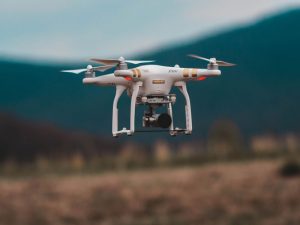OSHA Inspections Taking Flight
OSHA is beginning to use drones to inspect facilities — as long as they have the consent of the employer.
In 2018, the administration used camera-equipped drones to conduct at least nine inspections.
Last year’s drone inspections were mostly carried out following accidents at worksites that were considered “too dangerous” for inspectors to enter. Those inspections included a building collapse, an oil drilling rig fire, a combustible dust blast, a chemical plant explosion, and an incident on a television tower.
Recommended Article: 10 Ways to Improve EHS on Your Worksite in 2019
OSHA formalized drone use in early 2018 in a memo to all departments. The memo outlined the parameters inspectors must follow when using drones, which included that employers must consent to their use.
Each of the administration’s 10 regions was ordered to designate a staff member to oversee training requirements and evaluate reports submitted by drone teams.
The memo also mentioned that officials were considering obtaining a Blanket Public Certificate of Waiver or Authorization (COA). The COA, obtained via the Federal Aviation Administration, would allow OSHA to operate drones nationwide.
How Will OSHA Drones Impact Inspections?
Usually, inspections are limited in scope. OSHA can only cite employers for violations that are in plain sight. With the use of drones, scope could drastically increase. And, “plain sight” would be expanded to include the viewpoint of an overhead drone.
OSHA’s use of drones could potentially expand the ability to find violations during any inspection.
Related Article: 2018 OSHA Top 10 Violations List
Megan Baroni, an attorney with the law firm of Robinson & Cole, pointed out other benefits for inspectors. She explained that, as well as the area of view expanding, drones would significantly reduce overall time spend on ground-conducted inspections.
“Employers must consent to the drone use, but the question remains as to how the scope of an investigation might change if an employer refuses,” Baroni said.
What Employers Should Consider With Drone Implementation
Currently, employers must consent for drone inspections. However, that may change in the future, epscially if OSHA is granted the Blanket Public COA.
With drone use likely to grow, here are a few issues and actions employers should consider:
- Give thought to your facilities and whether drones can be flown without causing damage to equipment or processes;
- get involved from the outset in the development of the flight plan, and ask to get copies of any data that might be collected;
- have an authorized representative observe the drone’s operation;
- drones may inadvertently expose a company’s trade secrets in the course of an inspection. Make sure to address this issue with OSHA before consenting.
Drone usage is likely to expand. As an employer, it’s important to be prepared … not just in dangerous worksites, but for routine reviews as well.
The best way to get ahead of drone use is to make sure your worksite is compliant.
Find Out How You Can Save Up to $400 on Mobile Audio Exams with Worksite Medical – CLICK HERE




